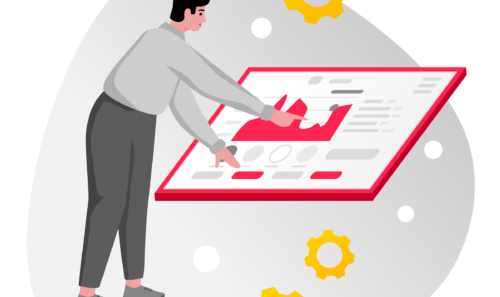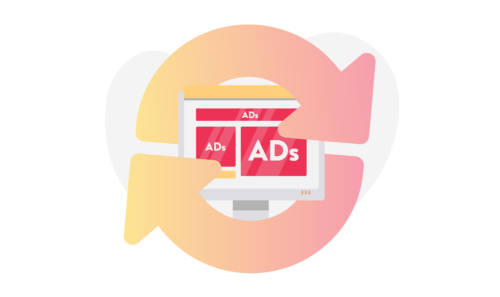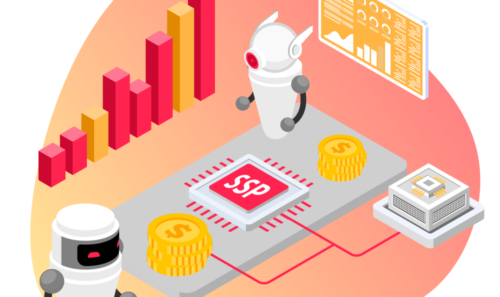What Can We Expect in 2021 for Digital Advertising and Programmatic?
To paraphrase Poland’s Nobel Prize winner for literature, Henryk Sienkiewicz, 2020 was a strange year in which “various signs in heaven and on the earth heralded some natural disasters and extraordinary events” (With Fire and Sword). I think people all over the world can relate to these words. In terms of our industry, what is 2021 heralding for the Programmatic Advertising landscape?
More or less Programmatic in 2021?

According to the IAB AdEx report, carried out in conjunction with PwC, in the first half of 2020, Digital Advertising spending in Poland for the first time in a long time decreased (as compared to H1 2019) – which may not surprise anyone considering the fact that many industries or individual companies had to deal with the real financial impact of the Coronavirus pandemic, which had a knock-on effect for Advertising. Interestingly, however, mobile Advertising and Programmatic did see a rise. Not without significance, however, has been the transfer of many everyday matters to the online market (including more purchases -> increases in e-commerce). And although the report refers to the Polish market, we can be strongly convinced that this is a global trend. But will the same trend continue into 2021? Well, we do not expect Programmatic rates to be lower than in 2020, and for the following reasons:
– We do not expect such a breakdown as in March-May of 2020. It can even be said that 2021 will be quite predictable for Programmatic, with companies being more prepared for every eventuality.
– A lot of advertising budgets planned for 2020 have been frozen and moved to 2021; mainly the budgets related to the major sports events of EURO 2020 and the Tokyo Olympics.
– It can be expected that many companies that have so far advertised, e.g. through outdoor channels or in cinemas, will move to the Internet (or increase their already existing budgets). Considering that many movie premieres have moved to different streaming portals, the above assumption may have a real chance of actually occurring. This will have a positive impact not only on the Programming channel in Open Auction, but also on the deals and guaranteed emissions in Programmatic.
Companies or customers for whom entering the software world is something new, will probably first become Advertisers, buying in an Open Auction; which is a simpler form because it does not require a sales team.
Those with more experience of Programmatic, apart from the Open Auction, may opt for guaranteed deals: a preferred deal or Programmatic guaranteed. In these times of uncertainty, the benefits of this type of sale may prove to be valuable for both Publishers and Advertisers.
Considering the above, in 2021, the proper pricing of advertising inventory by Publishers, both in the Open Market and in deals, will continue to be of great importance.
New, post-pandemic reality trends

Undoubtedly, the demand for Video Advertising, which has been growing for the past several years, will continue to forge ahead. We already know that there should be a high demand for this type of inventory, especially with viewability rates hovering above 70%. Additionally, it will be increasingly important to optimize video for completion rate. Moreover, we expect an increased demand for short video spots – 6s / 10s. These video product requirements will be valuable for both unguaranteed and guaranteed deals.
We can also expect a greater demand for guaranteed deals in Programmatic Guaranteed, settled in the CPM model. Here, too, the most important indicator desired by Advertisers will be high viewability: + 60%. Many agencies are already declaring the fact that they are looking to build their strategies for the coming years based on this transactional type – it may take place at the expense of Direct Campaigns, although this effect will not be discernible in the short-term.
It seems that when it comes to advertising formats under the Preferred Deals and Private Auction transaction types, these are becoming more and more popular, especially so-called Screenings (top + desktop). We are already seeing a great demand for larger formats, such as from 970×300 and upwards, and the demand for them looks set to increase further next year.
Additionally, it can be expected that the role of the Interstitial Format, i.e. advertising appearing on the user’s full screen, will come to the fore. This format has been available on the market for a long time, but recently Google has started to promote it more through its own channels (e.g. by providing a web beta version). So expansion is likely.
New Year… new rules
Each year brings with it a degree of uncertainty for the Programmatic ecosystem. It is enough to recall GDPR which came into force in 2018/2019; and Google in 2019 changing the logic of the auction model from second price to first price auctions. In turn, in 2020, one of the more hot topics was the TCF 2.0 (Transparency and Consent Framework) and the fact that Google decided to respect these IAB arrangements.

One of the biggest unknowns for Programmatic in 2021 will be the changes in 3rd party cookies and their impact on Publishers. In January 2020, Google announced a plan to terminate them at the Chrome browser level by 2022, which caused quite a panic on both sides of the Advertising market. However, due to the pandemic, this date may be slightly shifted. But this will not make the problem disappear; and, in our opinion, next year we can expect many technological innovations. Such innovations are sure to be in the field of either local or global partnerships, in the form of the German Net ID or the Portuguese Noniu. These will be designed to introduce a new reality and replace the old good cookies, facilitating the further use of those necessary elements of Internet Advertising, such as retargeting, frequency capping or attribution measurement.
What about the monopoly holders?
Another important aspect regarding the future of Digital Advertising that may take on a new dimension in 2021 is the issue of the shaping of the market in terms of the main players and their share. In recent months, both Google and Facebook have been facing antitrust lawsuits for their actions on the Advertising market. Although it is known that it is a long way from court appearance to judgment (and the potential impact of such a judgment), we can expect that in order to strengthen their position, both companies will undertake a number of activities next year in order to support the principles of healthy competition; and so as to prove that their operating strategies are having no negative impact on the rules governing the functioning of the market.
Regardless of the lawsuits and the situation with Google and Facebook (which by the way, apart from the lawsuit, are additionally burdened with the limitation of use relating to IDFA on Apple mobile devices), it is also worth observing the situation of Amazon, which, from a timid challenger has become a real force on the Advertising market; and after updating the forecasts for the next 2 years, it may become a real “counterweight” even for Google. This is all worth bearing in mind when planning optimization activities and setup changes over the course of the next several months; as the lack of UAM / TAM in the setup may soon be associated with leaving a table with significant piles of money on it.
Nothing will surprise us anymore?
After 2020, nothing will ever surprise us again, and if the reality we are living through remains a permanent prospect, one where Home Office and Zoom meetings become a part of our lives for good; then all futures will be difficult to predict. Nevertheless, we believe that every prospering company should be prepared for various scenarios, particularly in terms of operating strategy and possible ways of reacting, so we encourage you to consider what you should do in the event of all possible scenarios. Flexibility and adaptability have never been more important.







